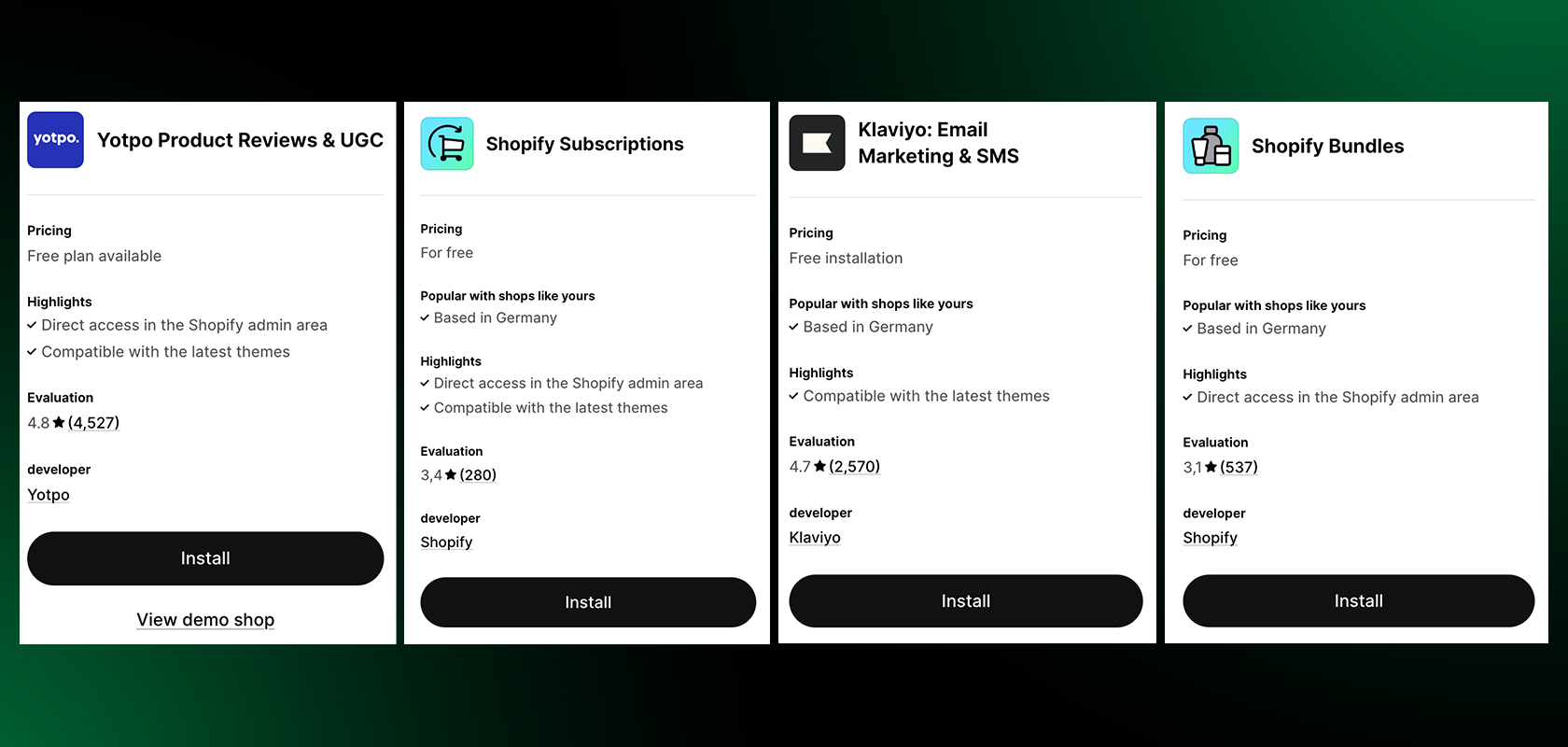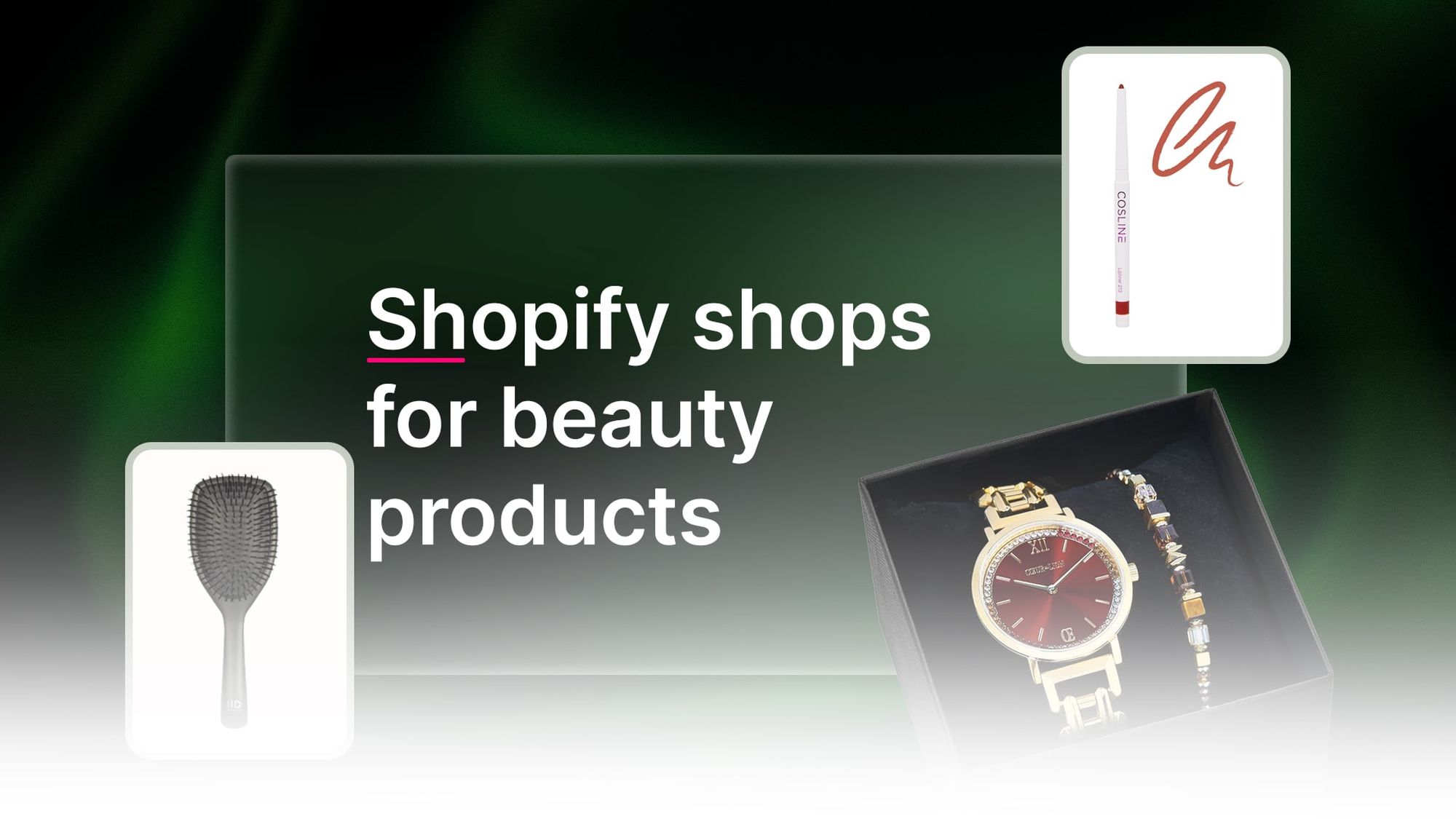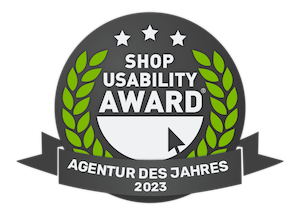The beauty industry is booming—whether it's skincare, decorative cosmetics, or hair products, consumers in Germany invest around €19.15 billion in beauty, self-care, and well-being. This opens up enormous opportunities in e-commerce for retailers, as demand for high-quality products and trustworthy brands continues to grow. With a Shopify store for beauty products, you can build a professional online presence that is perfect for both start-ups and established brands – from initial product presentation to scalable marketing and sales strategies.
Table of contents
- What exactly are Shopify stores for beauty products and how do they work?
- Advantages and disadvantages of Shopify stores for beauty products at a glance
- Creating Shopify stores for beauty products: Step-by-step guide
- Shopify themes for beauty shops
- Shopify design trends 2025/2026 for modern and appealing beauty products
- Shopify apps for beauty stores
- Beauty shops in practice: Successful brands on Shopify
- Conclusion
Would you like to sell your beauty products with Shopify? We're happy to help! Feel free to contact us with no obligation, and we'll discuss your project and requirements.
What exactly are Shopify stores for beauty products and how do they work?
A Shopify store for beauty products is a digital salesroom where retailers can sell makeup, skincare, perfume, or hair care products directly to their customers. Shopify takes care of the entire technical infrastructure: from product presentation and checkout to payment, shipping, and marketing tools. Thanks to its ease of use, retailers can manage their store themselves without any programming knowledge and still scale flexibly.
Advantages and disadvantages of Shopify stores for beauty products at a glance
Advantages:
Quick start without programming knowledge
Wide range of marketing and design options
Perfect for influencer marketing and social commerce
Flexible for B2C and D2C (direct-to-consumer)
Disadvantages:
Very high competitive pressure in beauty e-commerce
Need for strong branding and visual differentiation
Additional costs for apps and custom designs
Creating Shopify stores for beauty products: Step-by-step guide
1. Registration and basic setup
Create a Shopify account and choose a suitable Shopify plan. Secure your own domain and enter basic information such as company name, address, and tax settings.
2. Create products
Create your skincare and cosmetic products individually. Use high-quality images from different angles and add application tips and detailed ingredient information. This builds trust and meets legal requirements.
Reading tip: Product presentation in Shopify: How to create product descriptions.
3. Choose a design
Select a suitable theme from the Shopify Theme Store – minimalist, image-rich layouts are popular in the beauty sector. We will show you which themes are particularly suitable here later on.
Alternatively, you can have a custom design developed to make your brand stand out more.
4. Set payment and shipping options
Activate common payment methods such as Shopify Payments, PayPal, or Klarna. Set shipping zones and prices (e.g., free shipping for orders above a minimum value).
5. Integrate apps
Use Shopify apps for additional features, such as:
Subscription models (e.g., for reordering creams/serums)
Product reviews to build trust
Loyalty programs for returning customers
6. Marketing
Optimize your product pages for SEO, set up social media channels, and plan influencer collaborations to build reach. In addition, you can use email marketing to retain existing customers.
SEO-optimized blogs are also a great way to gain more visibility and showcase your expertise and information.
Reading tip: Creating blogs in Shopify – how to do it successfully.
Shopify themes for beauty shops
Beautify
Cost: $420 USD
Special features:
Shade Picker – native color variant selector, ideal for makeup, nail polish, or products with many shades
Quiz Sections – integrated quiz function (without app) that helps customers find suitable products (e.g., skin type or skincare goals)
Combined Products – combined display of multiple variants/colors on one page, without separate product pages
Fluid Section Blends & Parallax Hero – flexible layouts with smooth transitions and parallax effects for a high-quality brand look and feel
Video Carousels & Social Proof – option to present product videos, tutorials, or customer testimonials directly in the shop
Product filters, mega menu, image zoom & high-res images – facilitate navigation for large product ranges and visually highlight products
International support / multilingualism & RTL – useful for shops that serve multiple markets or languages
Sense
Cost: Free
Special features:
Modern, minimalist design – lots of white space and clean lines to show off products and images to their best advantage
Large, high-quality product images – including zoom function and image galleries for detailed product presentation
Product reviews and detailed product information – e.g., ingredients, application, and benefits for greater confidence among beauty customers
Flexible layouts and sections – drag-and-drop editing without code, easy customization of pages and content
Preconfigured templates and styles – quick start for new stores, ready to use right away
Optimized for different catalog sizes – works for both small and large product ranges
Conversion features & marketing aids – promo banners, recommended products, FAQ pages, and blog integration
Improved product search & navigation – filters, sorting, mega menu, and sticky header make it easier for customers to find their way around
Responsive / mobile-friendly – optimized for shopping on smartphones and tablets
Lollipop
Cost: $100 USD
Special features:
Playful, modern design – cheerful colors and creative layouts, ideal for beauty, cosmetics, and lifestyle brands
Product presentation – before/after sliders, zoom, rollover effects, and interactive hotspots for detailed product display
Focus on product details – ingredients, application instructions, videos, and tabs for a transparent and appealing presentation
Optimized product search & navigation – mega menu, filters, infinite scroll, and sticky header for a user-friendly shopping experience
Preconfigured templates & styles – two design templates (Lollipop and Nysa) for a quick start
Conversion optimization – promo banners, quick view, recommended products, and sticky cart for a higher conversion rate
Responsive/mobile-friendly – optimized for shopping on smartphones and tablets
Shopify design trends 2025/2026 for modern and appealing beauty products
Minimalist product pages: Clear, high-quality images put the products center stage; ingredients are clearly displayed, and application tips and benefits make purchasing decisions easier.
3D & micro-interactions: Small animations such as hover or scroll effects create lively user experiences and strengthen user engagement on an emotional level.
Organic shapes: Instead of strict grids, round elements, wavy lines, and soft color gradients dominate, creating a more human and calming effect.
Accessibility: Starting this year, clear color contrasts, scalable fonts, and screen reader compatibility are mandatory, making websites accessible to everyone.
Carbon-aware design: Sustainability is becoming a design factor. Smaller data volumes, optimized images (e.g., WebP, AVIF instead of JPG/PNG), and green hosting reduce the ecological footprint.
AI-supported personalization: Content adapts automatically. This increases relevance, conversions, and the user experience.
Video content: Tutorials, application videos, or “how-to-use” clips directly on the product pages increase trust and show products in action.
Storytelling elements: Presenting the brand philosophy, values, sustainability measures, or manufacturing processes creates emotional connection and brand identity.
AR and virtual try-on: Customers can virtually test lipsticks, foundation, or other beauty products, which increases interaction and reduces returns.
Shopify apps for beauty stores: More features thanks to the Shopify App Store

Yotpo for reviews (trust & social proof)
The Yotpo: Product Reviews app is a powerful solution for Shopify merchants who want to effectively collect, manage, and showcase customer reviews.
Pricing:
Free: Free
Starter: $15/month
Pro: $119/month
Shopify Subscriptions for recurring purchases (e.g., skincare, serums)
The Shopify Subscriptions app is a free solution from Shopify that allows merchants to offer products on a subscription basis directly through their Shopify admin. It is aimed at small to medium-sized businesses that want to generate regular recurring revenue.
Pricing:
Free
Klaviyo
for personalized email marketing
Klaviyo is a leading all-in-one marketing automation solution designed specifically for e-commerce businesses.
Pricing:
Free: Free setup
SMS: $15/month
Email: $20/month
Shopify Bundles for sets and gift boxes
The free Shopify Bundles app allows merchants to create and manage fixed product bundles and multipacks directly in the Shopify admin area.
Pricing:
Free
Beauty shops in practice: Successful brands on Shopify
Parsa Beauty
An outstanding example of the successful use of Shopify is the online store of PARSA Beauty, the leading beauty brand in Central Europe. The company demonstrates how innovative strength, high-quality products, and a clear brand identity can be perfectly combined in the digital world. The shop reflects the brand's values: modern design, clear navigation, and inspiring imagery that impressively presents the extensive range of hair and beauty tools and accessories.
Cosline Cosmetics
Cosline Cosmetics also impressively demonstrates how Shopify can be used as the basis for successful online retail. The shop, which is constantly being optimized by the Latori team, focuses on high-quality cosmetics made in Germany and presents the products in a clear, customer-oriented layout that emphasizes quality and simplicity.
In addition to its own online store, Cosline benefits from connections to numerous other sales channels such as TikTok, Amazon, Facebook, Pinterest, and eBay. This significantly increases its reach and gives customers the opportunity to discover their favorite products where they already spend their time.
Coeur de Lion
Our client Coeur de Lion demonstrates how exclusive jewelry design can be combined with modern e-commerce technologies to create a harmonious online experience. The shop impresses with its clear, elegant design, generous imagery, and detailed product presentations. High-resolution photos with a zoom function create a shopping experience that makes the jewelry almost tangible.
The shop also sets standards in terms of user-friendliness: variants such as different colors or lengths can be selected intuitively, while additional information on materials and care is directly integrated. Thanks to the clearly structured navigation, even extensive collections remain easy to navigate. In addition, individual product recommendations inspire matching combinations and thus elegantly increase the shopping cart value.
Kylie Cosmetics
The world's most famous beauty store relies on Shopify: Kylie Cosmetics. The online presence impresses with its clear structure and attractive design – categories such as “New,” “Best Sellers,” and “Virtual Try-On” enable an inspiring, visual shopping experience that showcases products such as lipsticks, complexion products, skincare, and fragrance sets in the best possible light.
Particularly strong: customer loyalty features such as a rewards program, regular promotions (e.g., sales and gift sets), and exclusive new releases. Through this combination of high-quality presentation, user-friendliness, and strategic customer focus, Kylie Cosmetics has created a compelling Shopify store that combines brand value and user experience.
Junglück
The Junglück online shop, which is managed by the Shopify agency and Latori partner Hyghstreet, impresses with its minimalist design that prioritizes user-friendliness. The clear structure enables intuitive navigation, with products clearly categorized and detailed information provided on ingredients and skin needs. Particularly noteworthy is the integration of a product finder that helps customers find suitable products based on their individual needs.
Conclusion
The market for beauty products in e-commerce is growing steadily—and Shopify offers the perfect platform to successfully enter this market. With the right tools, appealing design, and a clear brand identity, retailers can present their products in a compelling way and build long-term customer loyalty. Targeted marketing strategies, such as social media campaigns, influencer collaborations, and personalized offers, can further increase brand visibility. In addition, Shopify enables seamless integration of payment and shipping solutions, so that the entire shopping process can be made smooth for customers. Those who take advantage of these opportunities can not only increase sales, but also build a loyal community and position themselves sustainably in the highly competitive beauty market.
If you would also like to successfully sell your beauty products with Shopify or Shopify Plus, we would be happy to help you implement your project! Simply contact us and we will discuss your requirements.
FAQ
Why is Shopify particularly suitable for selling beauty products?
Shopify offers ease of use, professional designs, and integrated marketing tools. Especially in the beauty industry, where trust and visual presentation are crucial, Shopify enables appealing product presentation and flexible sales strategies, even without programming knowledge.
Which Shopify themes are recommended for beauty stores?
The most popular options include Beautify, Sense, and Lollipop (playful layout with before/after sliders). These themes are specifically tailored to beauty and lifestyle brands.
Which apps are useful for a successful beauty store?
Important Shopify apps include: Yotpo for product reviews, Shopify Subscriptions for subscription models, Klaviyo for personalized email marketing, and Shopify Bundles for sets and gift boxes.
What are the biggest challenges when selling beauty products online?
Competition in beauty e-commerce is fierce. Retailers must therefore invest in branding, visual differentiation, and customer trust. In addition, there are often additional costs for custom designs, marketing measures, and apps.
What design trends will be important for beauty stores in 2025/2026?
Modern beauty stores rely on minimalist product pages, 3D & micro-interactions, organic shapes, accessible design, sustainable optimizations (carbon-aware design), AI personalization, and AR/virtual try-on so customers can test products virtually.

